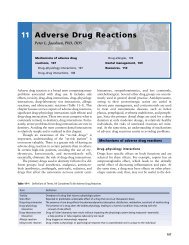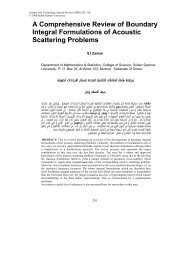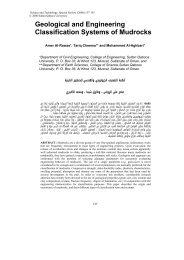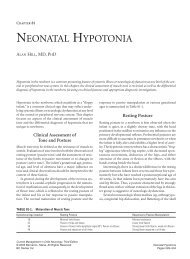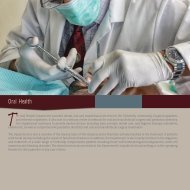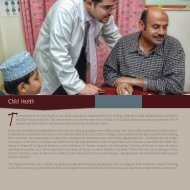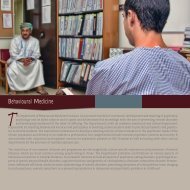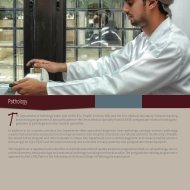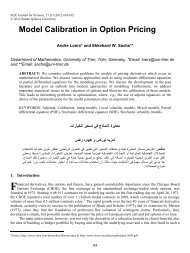Male Reproductive Toxicity - SQU Home
Male Reproductive Toxicity - SQU Home
Male Reproductive Toxicity - SQU Home
You also want an ePaper? Increase the reach of your titles
YUMPU automatically turns print PDFs into web optimized ePapers that Google loves.
TABLE 9Standarized Birth Ratio Studies of <strong>Male</strong> Fertility EffectsType of Exposure/OccupationAssociation withExposure aRef.Ethylene dibromide (+) 82DBCP + 83TDA and DNT – 78Mercury – 155Manganese + 155Ethylene glycol ether – 85Chemical-contaminated sewage – 156a–: no significant association; (+): marginally significantassociation; +: significant association.Source: Modified from Taskinen, H., Scand. J. Work Environ.Health, 16, 297, 1990.exists. 85 Levine 84 suggests SFR would be a reliable indicator in a cohort study in which bothcontrol and comparison population are selected on the same basis.2.3.5 Cohort StudiesCohort studies (Table 10) evaluate the frequency of adverse reproductive outcomebetween exposed and unexposed groups. Cross-sectional cohort studies evaluate the groupsas they currently exist, whereas historical cohort studies are conducted on previously exposedand unexposed groups. An example of the latter is the 1989 Vietnam experience study inwhich military veterans were grouped according to whether or not they had served in Vietnamfrom 1967 to 1972. 86 This study was able to detect subsequent differences between thegroups in semen quality and time to pregnancy but revealed little about the reproductivehealth of the individuals at the time of exposure.A cohort study may be longitudinal (prospective). In such a study, baseline data arecollected, and individuals are studied over time for a specific reproductive outcome. Alongitudinal study is exemplified by the study of “summer hire” pesticide applicators. 41Individuals were evaluated at the beginning of the season before they started working withpesticides and at the conclusion of the spraying season 2 months later. This report illustratesthe importance of selecting appropriate variables for a study design. If semen analyses areconducted to predict reproductive outcome, the correct time frame is needed. Since the timefor spermatogenesis and delivery of mature sperm to the ejaculate is approximately 72 days,if primary spermatogonia were affected by exposure, this would not be observed in a timeframe covering less than 80 to 90 days. Thus, the study of “summer hire” workers could notmake valid conclusions regarding the effects of a 2-month exposure to pesticide applicationon spermatogenesis.Cohort studies may involve questionnaires, neuroendocrine measurements, and semenanalyses or a combination of these. Questionnaire studies are advantageous in that they arethe least expensive and least invasive. As with case control studies, however, inherent problemsexist, such as possible interviewer bias and the selective memory of respondents who haveexperienced an adverse outcome. Additionally, many cohort studies lack the number ofpregnancies needed to detect differences between groups. 87 Studies evaluating the neuroendocrinesystem measure male hormones in blood samples. Although blood sampling is awidely accepted medical practice, it is an invasive procedure, and the endocrine profile doesnot necessarily reflect the status of the male reproductive system. 88 Semen analysis provides© 1999 by CRC Press LLC





